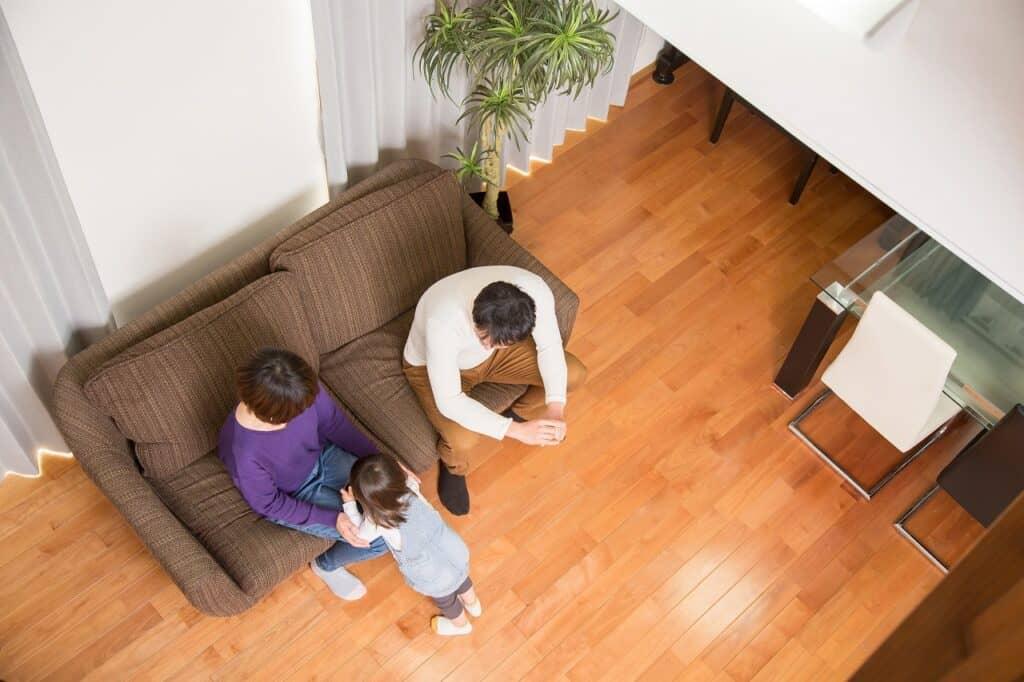Children are allergic to house dust. How do you protect your flooring from the cold?
If someone in your family has an allergy, you want to eliminate the source of the allergy so that they can live comfortably. One poster found out that her child was allergic to house dust, so she decided to put away the futon and carpet in the living room, but she seems to be worried about what other measures to protect against the cold. is.
"The other day, my child's atopy got worse, so when I took an allergy test, pollen and house dust came out positive. I'm going to clean up the kotatsu and carpet that I put out in the living room with flooring. In the summer, we don't put anything on the floor, we don't have cushions or sofas, and we wash and clean the curtains and futons frequently.
There is an air conditioner in the living room, and an oil fan heater is also installed in winter. But it's cold if you don't put something on it. My child is studying in the living room, so what should I do?
I've thought about using cushions for the number of people in place of the carpet and washing them frequently, or using electric blankets, but I don't know which one is better. Do you have any suggestions for those who don't use kotatsu, or who don't use carpet to prevent house dust?"
In this post, I have received advice from a mom who also has allergies in her family and is taking measures.
What is house dust allergy?
First, let's look at detailed information about house dust allergies.
House dust is the dust that falls from the human body, dandruff, tick droppings and corpses, mold, bacteria, fiber waste, etc., which are invisible to the human eye. Small dust particles that cannot be seen visually. House dust allergy is a phenomenon that occurs when the body tries to get rid of this house dust.
In order to prevent allergies to house dust, it is said that it is important not to accumulate house dust that causes it indoors as much as possible and to prevent mold and ticks from growing.

For this reason, it seems that the poster is trying to clean up the kotatsu futon and carpet that tend to collect dust. Now, let's take a look at how moms, who also have house dust allergies in their family, are doing things in their living rooms.
Reference: Chiba Medical Association "What is House Dust Allergy?" So, if you develop it, you don't put anything on it, and you can't put it on."We don't have anything on the floor. Adults wear slippers and children wear non-slip room shoes. When it comes to sofas, I never buy fabric ones, always leather ones. I don't use curtains, I just hang blinds.
"We have nothing on the floor and no sofa. The futon is a type that does not easily generate dust. This has reduced my atopy and asthma.”
There are many homes that do not lay anything on the flooring as a countermeasure against dust mites and dust. It seems that some people are taking thorough measures not to use cloth for sofas and curtains.
Lay a thin rug or an allergen-reducing rug
"My house has a rug. My children and I both have house dust allergies, but we don't have allergies because we're properly vacuuming and vacuuming our futons."
"I myself am allergic to house dust, but I have a short-pile rug in my living room. I vacuum every day and use a humidifying air purifier 24 hours a day, 365 days a year. Also, I do “rolling” while watching TV several times a day.”
``We have a child with atopy and asthma, but we have a rug that suppresses allergens. I don't think you can stop worrying about it too much, because even if you get rid of all cloth products, dust will stand up. I think you should pay attention to ventilation and cleaning diligently. Isn't it because of pollen that atopy gets worse at this time of year? 』
It depends on the degree of allergy, so it is not possible to generalize, but we have received feedback that if you try to clean frequently, the symptoms will not occur even if you spread a carpet or rug on the flooring. Others recommended small, easy-to-clean rugs over hard-to-clean carpets.
Please consider the best method while observing the child who has allergies.
Written by Kaori Monoesado Edited by blackcat
